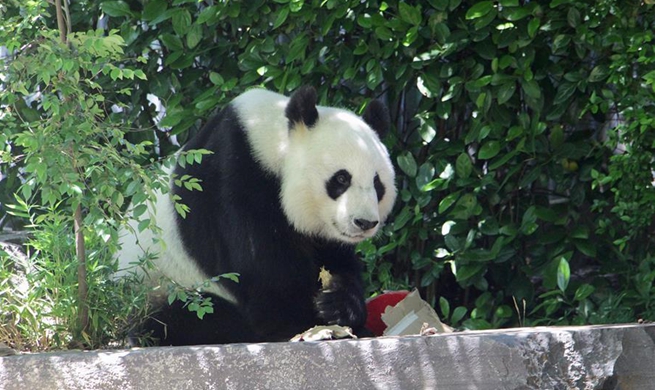URUMQI, Nov. 25 (Xinhua) -- To better monitor the activities of the Przewalski's horse population in northwest China's Xinjiang Uygur Autonomous Region, researchers are using satellite technology to monitor the living conditions of the species as winter settles in.
The Przewalski's horse, named after its Russian discoverer, is an endangered species native to the desert grassland of Central Asia. It is considered the only wild horse in existence today.
Staff members with the Xinjiang Wild Horse Breeding and Research Center have found a population consisting of 19 Przewalski's horses in northern Xinjiang's Junggar Basin, a main habitat of the wild horses. Now, most parts of the basin have been covered by snow with a temperature of nearly 20 degrees Celsius below zero.
Researchers found the "queen" of the population, a mare with higher status in the group, and put a new technology-assisted satellite tracing collar with the ability to shoot videos on its neck.
The 19 Przewalski's horses were developed from a population of six, which were released to the wild in 2007, said Ma Xinping, director of the Xinjiang Wild Horse Breeding and Research Center.
Monitoring the "queen's" activities would shed light onto the habits of the population as a whole, according to Ma.
Aside from assistance during big snowstorms, the horses do not need outside help to get enough food, said the director of the local wild horse management station, adding that the population has regained their wild nature well.
There are about 2,000 Przewalski's horses in the world today. However, the rare horses were once extinct in Xinjiang in the wake of rampant hunting beginning in the early 19th century. China started a breeding program in 1986 using 24 horses brought back from Britain and Germany to repopulate the subspecies.
The latest data from the Xinjiang Wild Horse Breeding and Research Center shows the wild horse population in Xinjiang has reached 438, including 90 in captivity, 240 in the wild and 108 in semi-captivity.

















